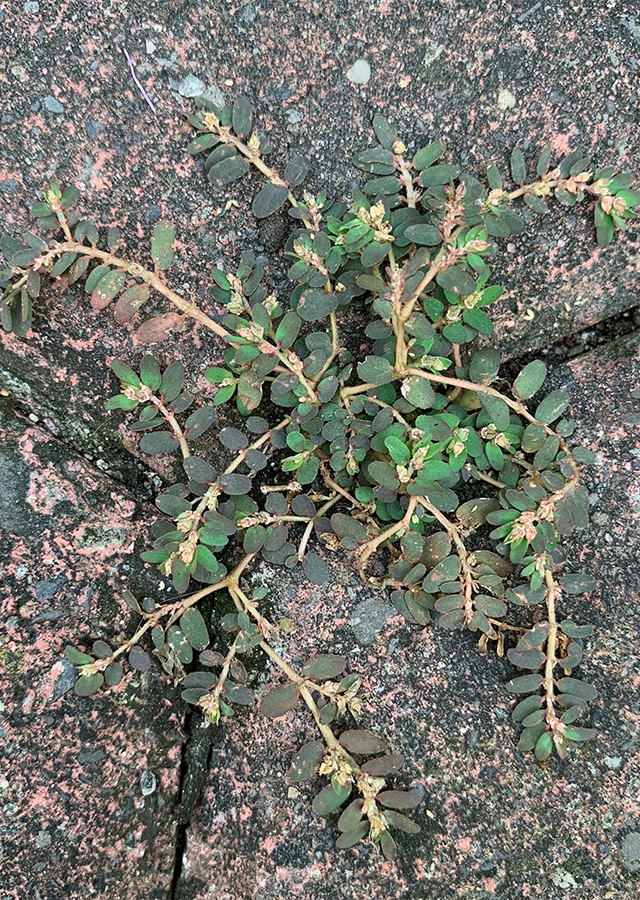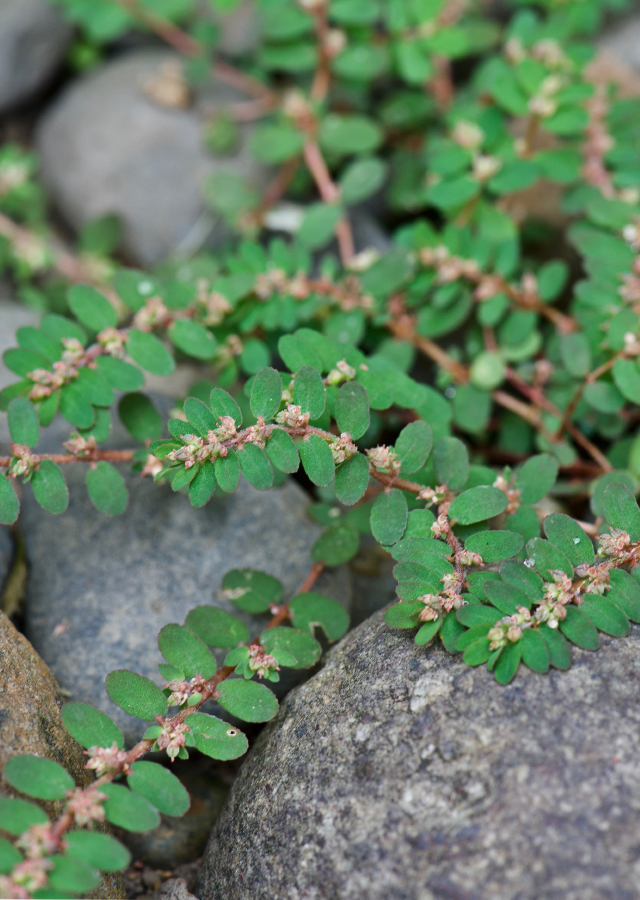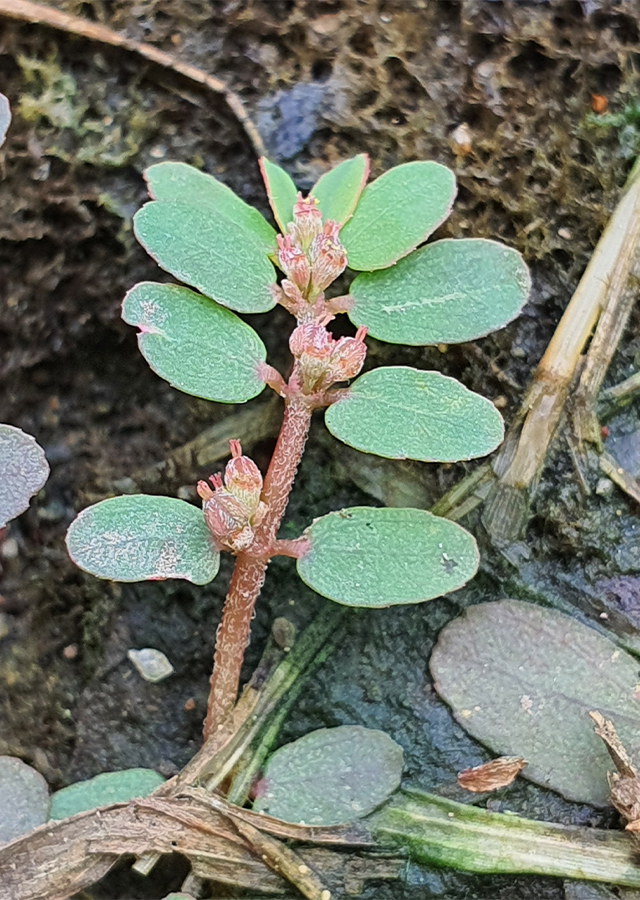Thyme-leaf spurge
Euphorbia thymifolia L.
Euphorbiaceae
Location in our garden
Principal



Synonym
Anisophyllum thymifolium (L.) Haw.
Aplarina microphylla (Lam.) Raf.
Chamaesyce mauritiana Comm. ex Denis
Habitus
Herbaceous. Prostrate, annual herb with branches up to 25 cm long.
Part Used
The Whole Plant
Growing Requirements
Full Sunshine
Habitat
Rocky Areas
Overview
Euphorbia thymifolia is native to tropical America and is now widely distributed throughout the tropics and subtropics. It is widespread in West Africa and the Indian Ocean islands, and advancing in eastern and southern Africa. The plant is a very popular medicinal herb in much of Africa and also in many other areas of the tropics. It is commonly harvested from the wild and is also sold in local markets.
Vernacular Names
Gelang susu (Malaysia), Choti-dudhi (India), Nam nom ratchasi lek (Thailand), qian gen cao (China), petite rougette (French).
Agroecology
The plant grows in waste places along roads and trails in fallow, rice paddies etc throughout the Pantropics. They grow up to an altitude of 1600 m. It thrives all-round the year being able to withstand cold during winter and drought during hot and dry months of summer. The plant continues to flower and fruit in all seasons. The plant has wide-range of tolerance with regard to moisture in the substratum.
Morphology
- Root - numerous and adventitious
- Stem - contains latex
- Leaves - opposite, distichous, deeply 2–3toothed; petiole 0.5 mm long; blade ovate, up to 8 mm × 4 mm, base unequal, one side cuneate, the other side rounded, apex rounded, margins shallowly toothed, glabrous above, sparsely long-hairy beneath.
- Flowers - monoecious, inflorescence a terminal or axillary cluster of flowers,on short leafy shoots, 1 female flower surrounded by few male flowers.
- Fruit - an acutely 3-lobed, almost sessile capsule 1 mm × 1 mm, base truncate, short-hairy, 3-seeded.
- Seeds - conical, 0.5 mm in diameter, acutely 4-angled, shallowly transversely wrinkled, reddish brown
Cultivation
- Propagation by seed.
- Seeds can germinate immediately after dispersal from the plant, if the conditions are favorable and do not have a dormant period.
Chemical Constituents
- Aerial parts: cinnamic acid derivatives, hydrolysable tannin, minerals, nutrients, antioxidants, essential oil, misoellaneous contituents.
- Stem and leaves: glycoside;
- Roots: sterols
Traditional Medicinal Uses
- Anti-inflammatory, analgesic, haemostatic, antithrombic, antioxidant and vasoprotective actions, antiviral, anti-allergic, anti-inflammatory, antitumour properties.
- In Africa it is used in decoction or infusion against dysentery, enteritis, diarrhoea and venereal diseases. The dried leaves and seeds are used as a stimulant, astringent, anthelmintic and laxative. A decoction of fresh aerial parts is applied externally to treat dermatitis, eczema and skin inflammations. An infusion of the leafy stems is taken as a bitter diuretic. Women with heavy menstruation drink the latex as a tonic. Fresh crushed plants are applied as a plaster for healing sprains. The latex is applied to warts.
- In Sierra Leone the leaves are pulped with water and applied to the head to treat headache. The leaves are used in a decoction to treat cystitis and kidney ailments.
- In Côte d’Ivoire and Congo a decoction of the whole plant is drunk to treat lung problems.
- In southern India the latex is applied as a remedy for ringworm and scabies.
- In Java infusion used for diarrhea and dysentery; a root decoction for amenorrhea and gonorrhea; Seeds and small leaves are aromatic and astringent and given in powder form for bowel complaints of children.
